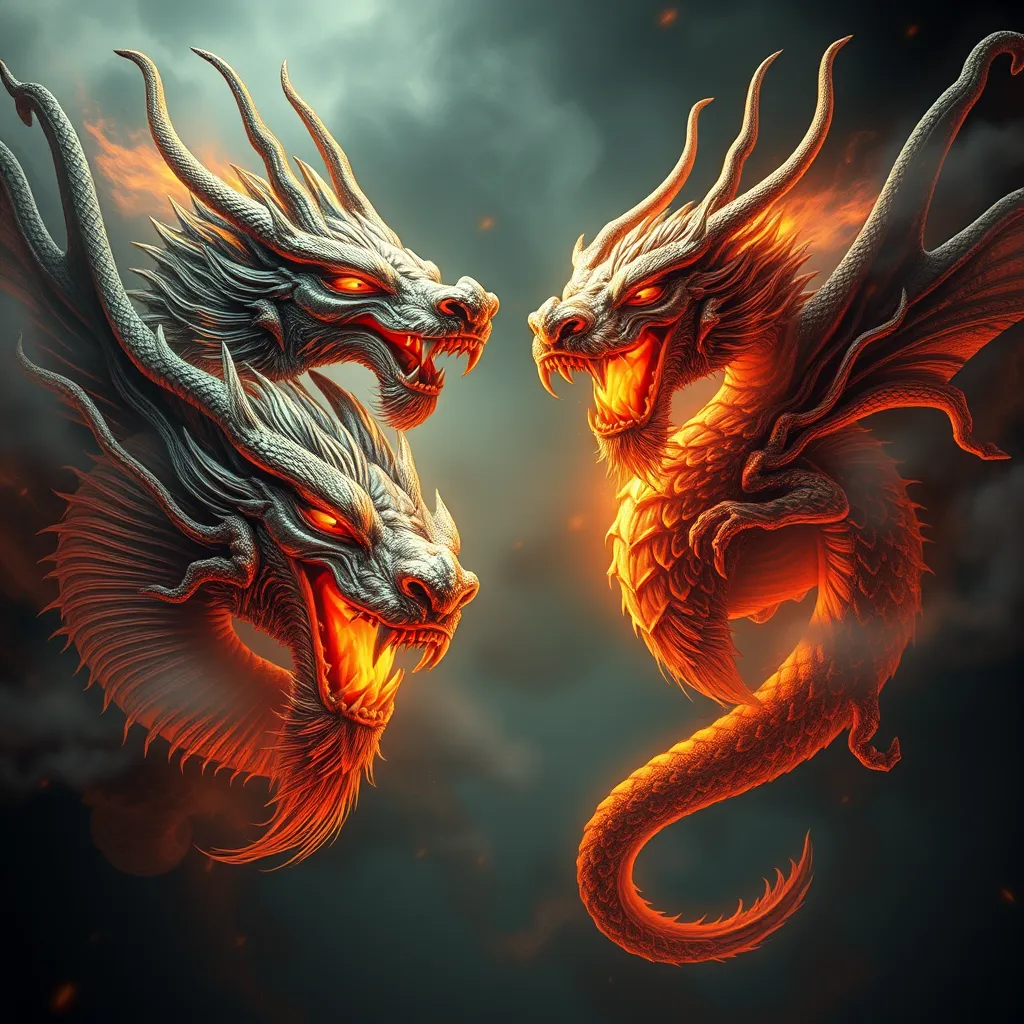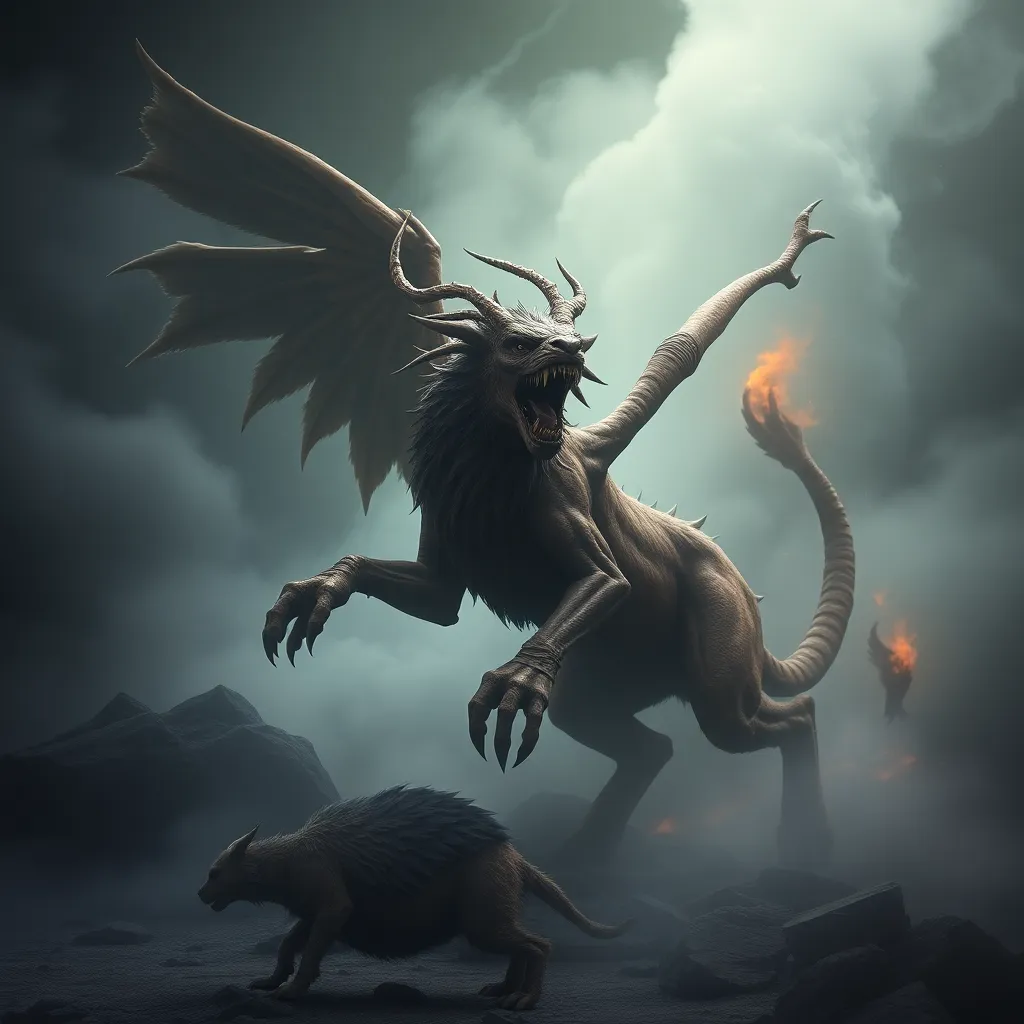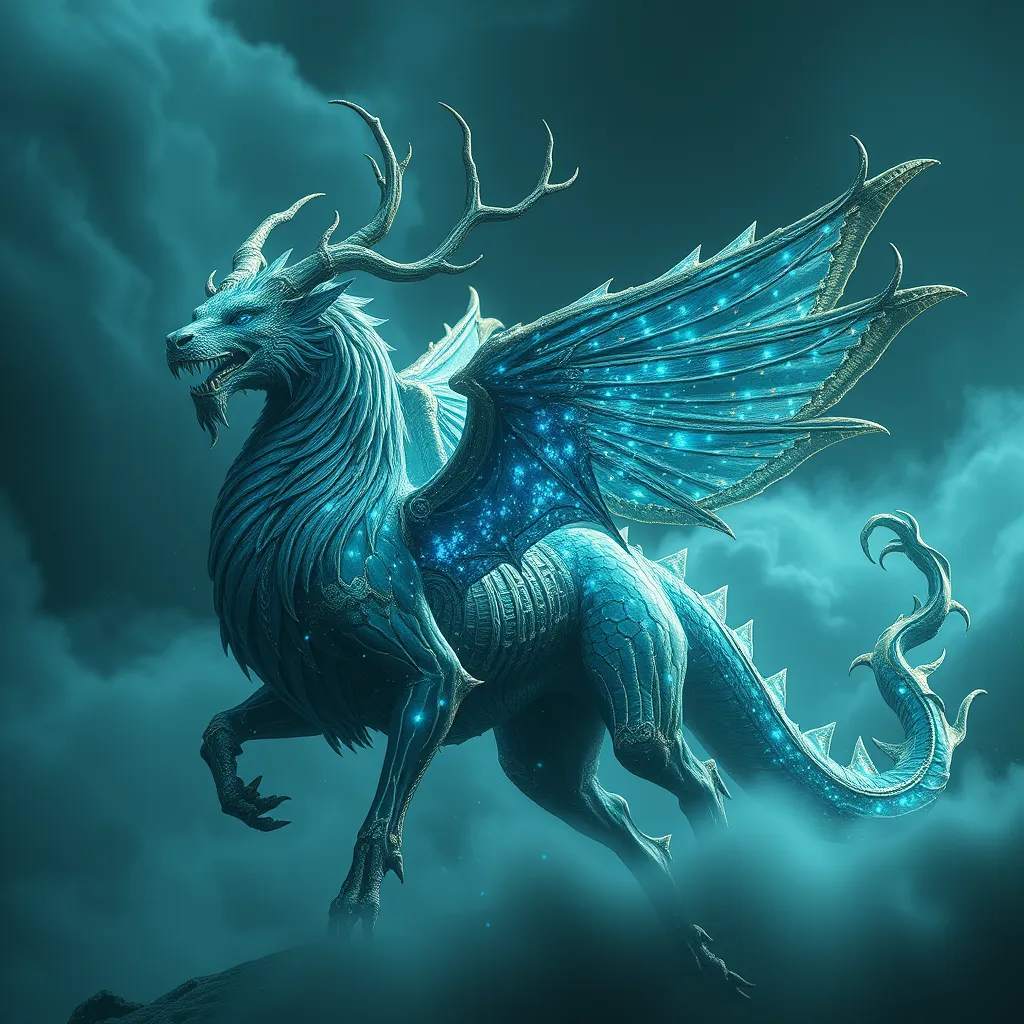Faces of the Dragon: Exploring the Different Forms and Manifestations of Dragons in Myth
I. Introduction
Dragons have long been a powerful presence in mythology, captivating the human imagination with their majestic forms and formidable traits. Defined as large, serpent-like creatures, dragons appear in various mythologies, embodying a wide range of characteristics and meanings. From fearsome beasts to wise protectors, their significance transcends cultures and epochs.
The importance of dragons in various cultures cannot be overstated; they serve as symbols of power, mystery, and the unknown. Throughout history, dragons have symbolized both the chaotic forces of nature and the potential for transformation and enlightenment. This article explores the different forms and manifestations of dragons in mythology, delving into their origins, cultural variations, roles in folklore, and their psychological significance.
II. The Origins of Dragons in Mythology
The origins of dragons can be traced back to some of the earliest civilizations in human history. Historical context reveals that these creatures were often depicted in ancient art and literature, serving various symbolic purposes. In Mesopotamia, for instance, the god Marduk is famously portrayed battling Tiamat, a dragon-like creature representing chaos and the primordial ocean.
Culturally, dragons held significant meaning in ancient civilizations such as the Babylonians, Egyptians, and Chinese. In these societies, dragons were often seen as deities or divine guardians, embodying the power of nature and the cosmos. Over time, dragon imagery evolved, influenced by cultural exchanges and changing societal values, leading to the diverse representations we see today.
III. Cultural Variations of Dragons
Dragons manifest differently across cultures, with notable distinctions between Western and Eastern dragons.
- Western Dragons: Often depicted as fire-breathing beasts, Western dragons are typically characterized as malevolent creatures, hoarding treasure and terrorizing villages. They are frequently portrayed in legends as adversaries to be slain by heroes, embodying the struggle between good and evil.
- Eastern Dragons: In contrast, Eastern dragons are seen as symbols of power, wisdom, and benevolence. They are often associated with water and rain, revered as guardians of rivers and seas. Unlike their Western counterparts, Eastern dragons are usually depicted as benevolent beings that bring prosperity and good fortune.
The differences between Western and Eastern dragons highlight the cultural values and beliefs of their respective societies. While Western dragons often symbolize fear and destruction, Eastern dragons represent harmony, balance, and the nurturing aspects of nature.
IV. Dragons in Folklore and Legends
Dragons play prominent roles in folklore and legends worldwide, often serving as central figures in epic tales. Notable dragon myths include:
- St. George and the Dragon: A famous legend from medieval Europe where St. George slays a dragon to save a princess, symbolizing the triumph of good over evil.
- The Dragon Kings of China: These legendary figures are believed to control water and weather, showcasing the dragon’s connection to nature and the elements.
- Quetzalcoatl: In Mesoamerican mythology, this feathered serpent god embodies the duality of creation and destruction.
The role of dragons in these tales often reflects the human experience, with encounters representing challenges and trials that must be faced. Dragon encounters symbolize the struggle between chaos and order, often leading to growth and transformation for the hero or protagonist.
V. Dragons as Symbols of Nature and Chaos
Dragons are frequently associated with natural elements, embodying the raw power of the earth, water, and fire. The connection between dragons and these elements reveals their dual nature as both creators and destroyers.
- Water: Many cultures depict dragons as guardians of rivers and seas, symbolizing life and fertility.
- Earth: Dragons are often seen as protectors of the land, representing stability and strength.
- Fire: Fire-breathing dragons embody chaos and destruction, serving as a reminder of nature’s untamed power.
This duality highlights the balance of chaos and order represented by dragons in mythology. They can unleash devastating forces yet also represent wisdom, protection, and the potential for renewal.
VI. The Psychological and Archetypal Significance of Dragons
In psychology, dragons hold significant archetypal meanings. Carl Jung explored the concept of archetypes in the collective unconscious, identifying dragons as symbols of inner struggles and fears. The dragon often represents the shadow self—those aspects of our personality that we may fear or reject.
Moreover, the hero’s journey, a common narrative structure, often involves a confrontation with a dragon or dragon-like creature. This encounter serves as a transformative challenge, forcing the hero to confront their fears and emerge stronger. The dragon, therefore, becomes a catalyst for personal growth and self-discovery.
VII. Modern Interpretations and Representations of Dragons
In contemporary literature and media, dragons continue to captivate audiences. They appear in various forms, from the terrifying beasts of fantasy novels to the charming companions in animated films. Notable examples include:
- Game of Thrones: George R.R. Martin’s series features dragons as powerful symbols of heritage and destruction.
- How to Train Your Dragon: This animated series presents dragons as intelligent, misunderstood creatures, emphasizing themes of friendship and harmony.
- Video Games: Dragons are prominent in many video games, often serving as formidable foes or allies.
The resurgence of dragons in popular culture reflects a growing fascination with these mythical creatures, showcasing evolving perceptions that blend fear, admiration, and companionship.
VIII. Conclusion
In summary, dragons remain a profound symbol in human culture, representing a range of meanings from chaos to benevolence. Their diverse forms and manifestations in mythology highlight the complexities of human experience and the natural world. The enduring legacy of dragons invites us to explore the depths of our imagination and the age-old stories that shape our understanding of fear, power, and transformation.
As we continue to engage with dragon mythology in literature, media, and art, we are reminded of the rich narratives and cultural significance they hold. The journey of understanding dragons is far from over, and there remains much to explore and appreciate in the fascinating world of dragon mythology.



